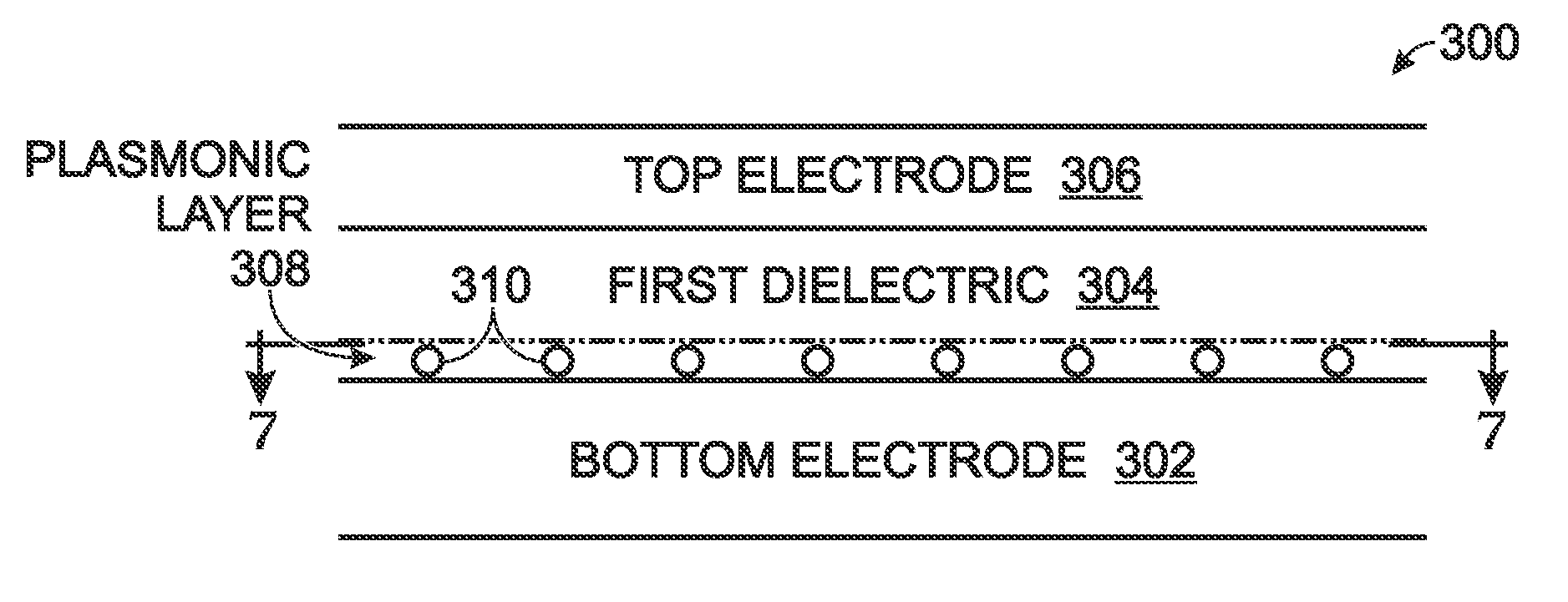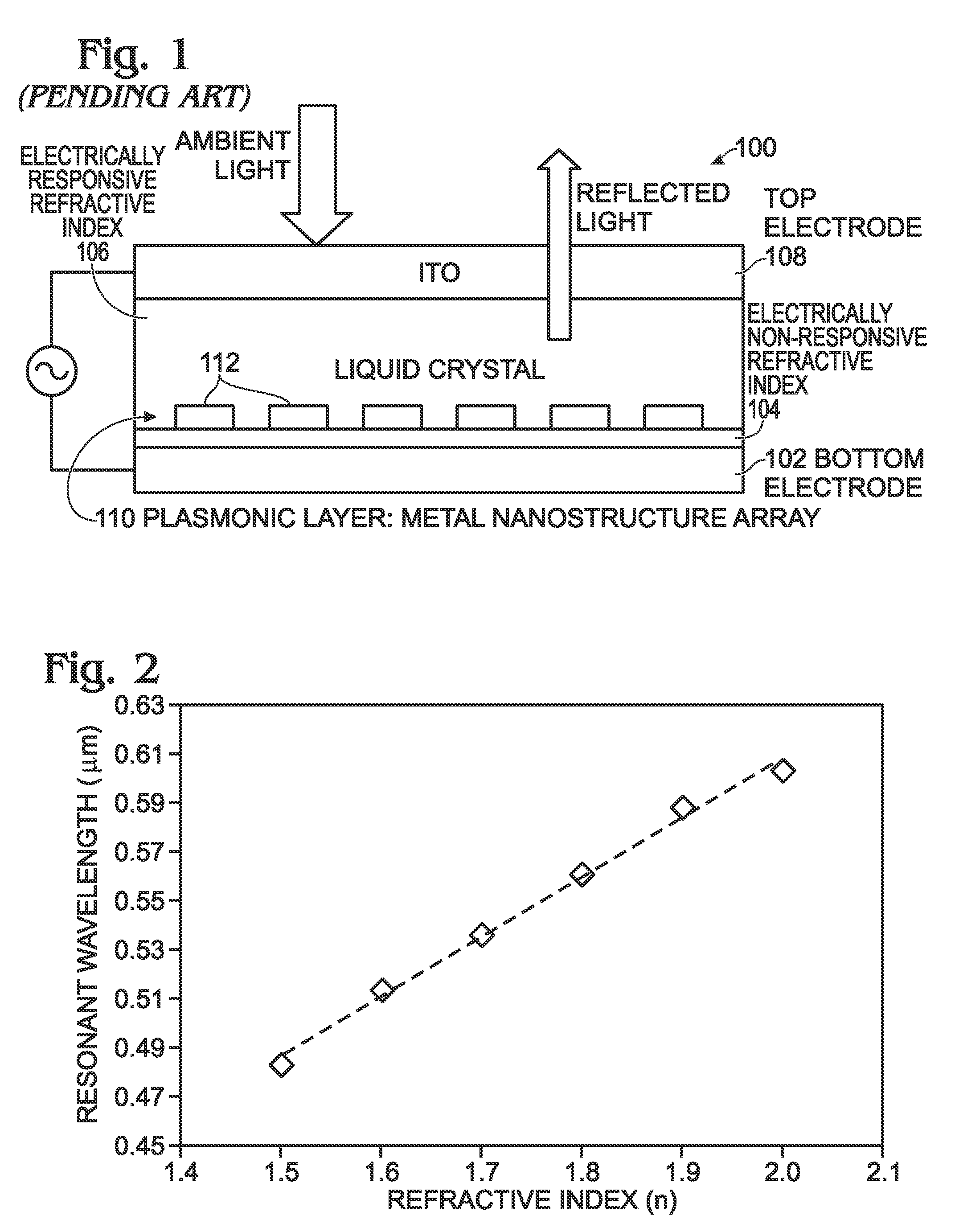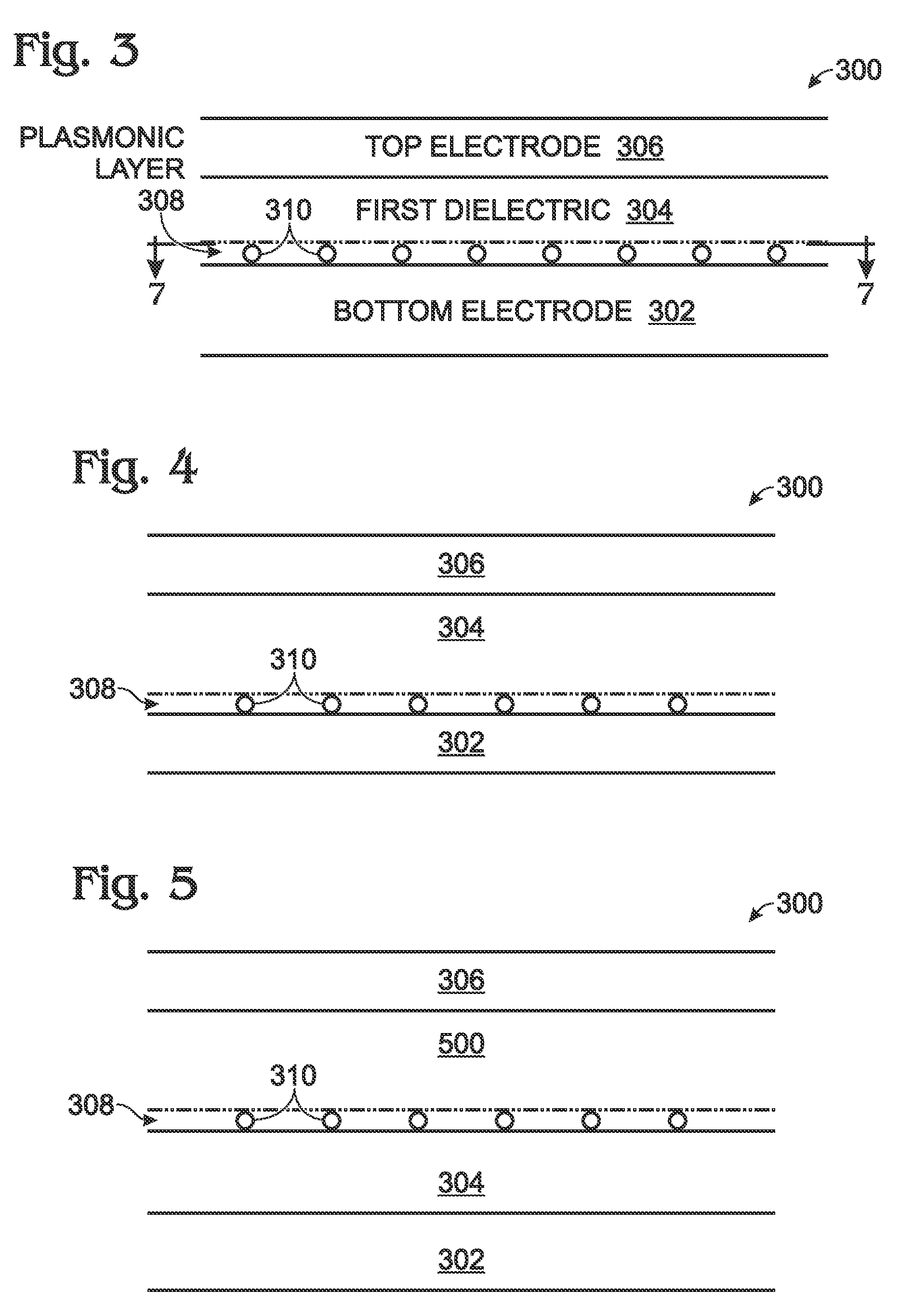Plasmonic device tuned using elastic and refractive modulation mechanisms
a plasmonic display and elastic modulation technology, applied in the field of electromechanical visual display devices, can solve the problems of wasting the available light energy provided by the surrounding environment, requiring additional power to overcome the ambient light of the display, and display technologies all have disadvantages or challenges to overcome, so as to enhance the color tuning range of the nanoplasmonic display, the effect of fast video application and favorable characteristics
- Summary
- Abstract
- Description
- Claims
- Application Information
AI Technical Summary
Benefits of technology
Problems solved by technology
Method used
Image
Examples
Embodiment Construction
[0032]FIG. 3 is a partial cross-sectional view of a plasmonic display device with dual modulation mechanisms. The device 300 comprises an electrically conductive bottom electrode 302. A first dielectric layer 304 overlies the bottom electrode 302. The first dielectric layer 304 is made from an elastic polymer material having a refractive index responsive to an electric field. An electrically conductive top electrode 306 overlies the first dielectric layer. A first plasmonic layer 308, including a plurality of discrete plasmonic particles 310, is interposed between the top electrode 306 and the bottom electrode 302, and in contact with the first dielectric layer 304. In one aspect as shown, the first plasmonic layer 308 is embedded in the first dielectric layer 304.
[0033]In one aspect, both the top electrode 306 and the bottom electrode 302 are transparent to a first range of wavelengths in the visible spectrum of light, made from a material such as indium tin oxide (ITO) or ZnO. In ...
PUM
| Property | Measurement | Unit |
|---|---|---|
| size | aaaaa | aaaaa |
| refractive index | aaaaa | aaaaa |
| refractive index | aaaaa | aaaaa |
Abstract
Description
Claims
Application Information
 Login to View More
Login to View More - R&D
- Intellectual Property
- Life Sciences
- Materials
- Tech Scout
- Unparalleled Data Quality
- Higher Quality Content
- 60% Fewer Hallucinations
Browse by: Latest US Patents, China's latest patents, Technical Efficacy Thesaurus, Application Domain, Technology Topic, Popular Technical Reports.
© 2025 PatSnap. All rights reserved.Legal|Privacy policy|Modern Slavery Act Transparency Statement|Sitemap|About US| Contact US: help@patsnap.com



